The Sinai Trail might be a year old but when I glance down beside the well-trodden trail and spot unfamiliar script carved into the rock near Al Hamadet pass, it’s clear that I am on a route has been in use for thousands of years.
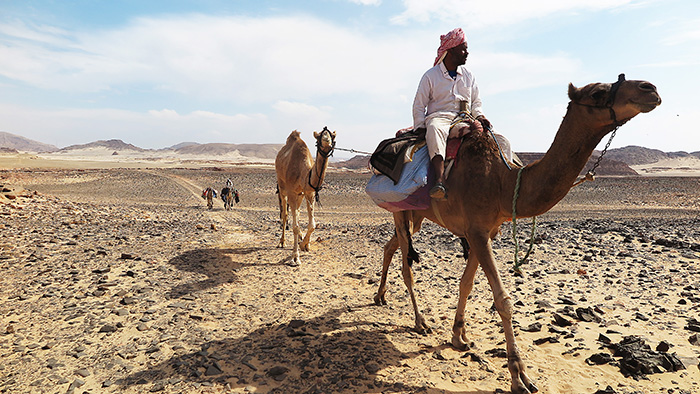
Musallem, my Bedouin guide, says the writing is probably Nabataean, from the once-dominant trading nation from 2000 years ago that produced the stone city of Petra before falling from prominence. Already today, we had seen similar inscriptions in ancient Greek, from Christian pilgrims on the trek from Jerusalem to Mt Sinai, and in modern Arabic from the Bedouins who now use these well-worn paths.
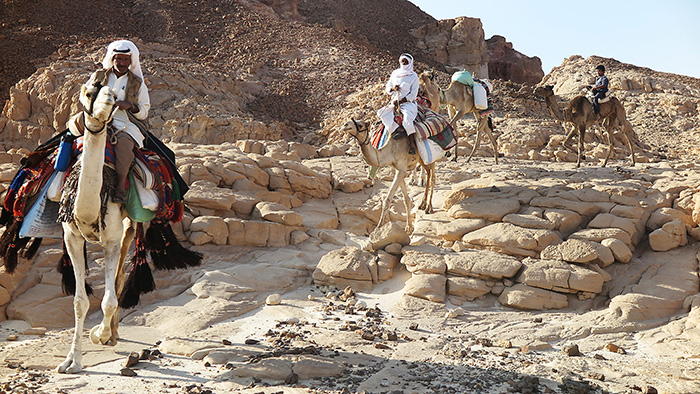
The idea behind the creation of the Sinai Trail, a 200km camel-supported hiking route from the gulf of Aqaba to Jebel Katherina, Egypt’s highest peak, was to ensure that new generations of Bedouins will have the skills to trek across this unforgiving landscape in the way their forefathers did but while also earning a living by introducing tourists to desert travel.
The theory was the trail would reverse the trend of declining tourism revenues since the 2011 Egyptian revolution but unfortunately, the reality was the exact opposite. Just weeks after the trail was launched in October last year, militants planted a bomb on a Russian airliner leaving Sharm El Sheikh, killing all 224 on board. All charter flights were stopped and tourism went into a near-total decline.
The bitter irony of this is that the territory traversed by the trail is probably the safest in Egypt. The Bedouin have always considered themselves to be effectively separate from the Egyptian state and that included looking after their own security.
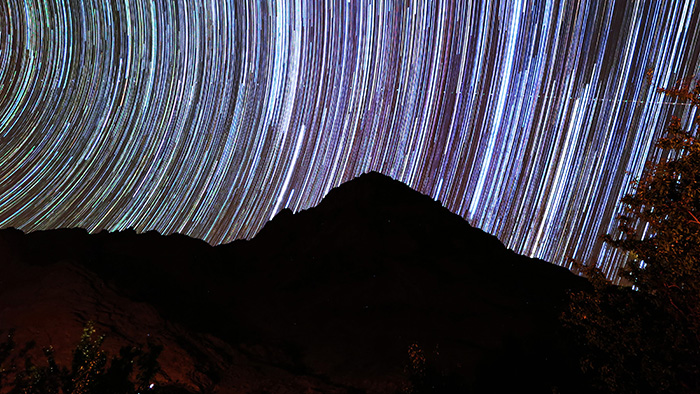
Just what this means was demonstrated to us midway through our hike, when a one-in-25-year storm rolled in and caused major flooding. The trail organisers began calling the people they knew in the area and soon had a scarily precise account of exactly where we were and where we’d been.
High-tech CCTV security systems were clearly no match for the Bedouin grape vine and had militants from northern Sinai ventured into the territory of the Tarabeen, Muzeina or Jebeleya tribes, they would have been noticed immediately.
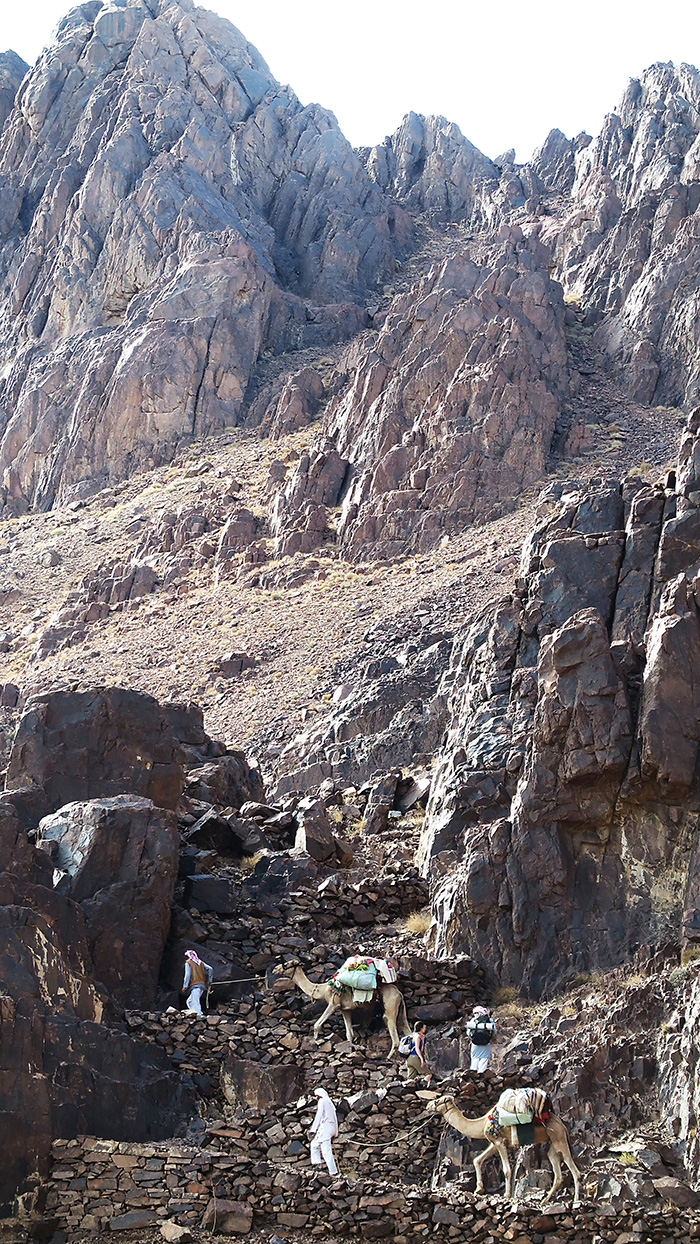
The trouble is the wider world remains oblivious of all this. Many are put off by well-meaning travel advisories discouraging any travel to the Sinai.
What that meant for us was we saw not a single other westerner between leaving the coast at Ras Shetain and arriving at St Catherine nearly two weeks later.
The length of the trail is just right because it takes time to adjust to the rhythms of desert travel – while it takes a while to get out of the city, it turns out it takes longer to get the city out of us. Anything shorter than a week would not be enough to fully appreciate the window the trail offers into how the Bedouins actually live.
It took a while to adjust to getting up with the sun, finding a shady place to escape the midday heat, enjoying cups of hot sweet tea offered by everyone we met, cooking over a fire and then going to bed just as the last glow of dusk is replaced by night skies that are the starriest I had ever seen anywhere.
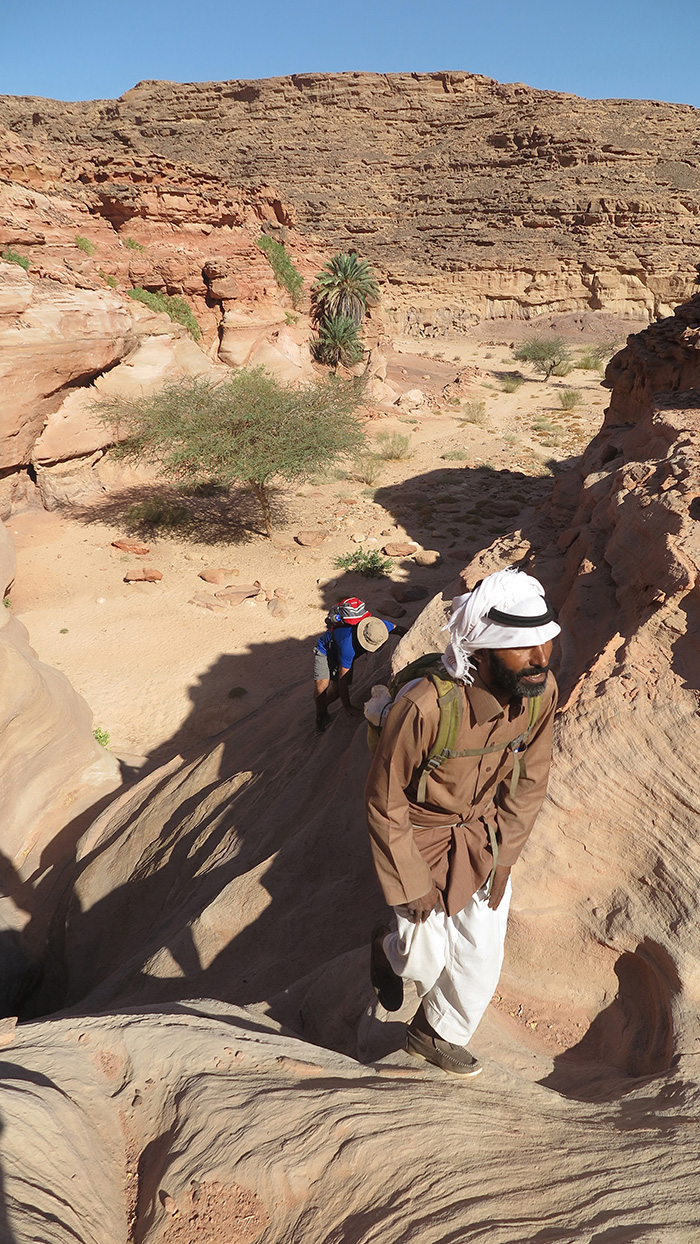
Our first guide was the perpetually-smiling Musallem, from the Tarabeen tribe. He was lucky enough to have a thriving beach hut business but jumped at the chance to take us hiking.
“I prefer being in the mountains,” was his simple explanation.
This would be a difficult trail to do without camel support, with sometimes days between reliable sources of water. The camels mean we need only carry day packs and can eat like kings, but by far my favourite part of our trek was the cultural aspect. Rather than being some hokey tourist-orientated activity, Musallem and our camel guy, Mohammed, were mostly doing what they’d ordinarily do in the desert and we just happened to be along for the ride.
After four days slogging along sandy wadis and scaling modest mountains, we reached Ein Hudera, an oasis village that is thought to have been Hazeroth where Moses sought shelter, and were in the Muzeina tribe’s territory.
Our new guide, Farag, also said he too preferred being in the desert and leading camel treks most of all. We concurred.
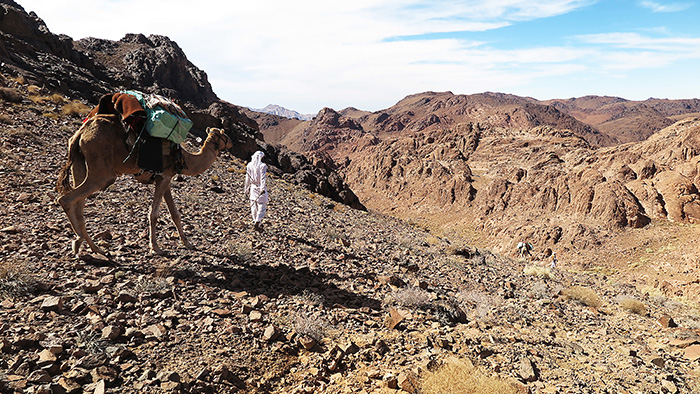
This time we had seven camels, including a bunch of two-year-olds who were being introduced to camel trekking. We wondered if our new camel guys, Eid and Taiwee, would have been able to afford to do this if we hadn’t been on this trip?
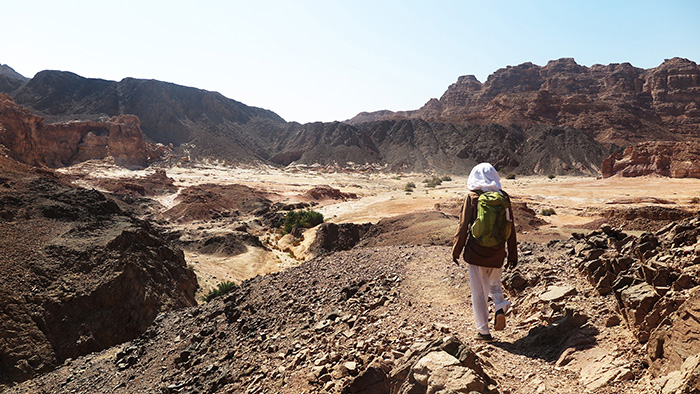
Taiwee also had Mohammed, his 10-year-old son, along to begin the years-long process of learning how to travel in the desert with camels. Watching this tutelage was my favourite part of this part of the journey.
Nssr, a quick-witted and perpetually smiling guide with the Jebeleya tribe, took us for the final stretch through their territory, which he knew as thoroughly as the folds in his kandura.
After watching the sun set from the summit of Jebel Musa – Moses Mountain, as Mt Sinai is known locally – we then scaled Jebel Katherina, Egypt’s highest peak. Looking north, there was that sense of satisfaction that comes from having walked from further than we could see.
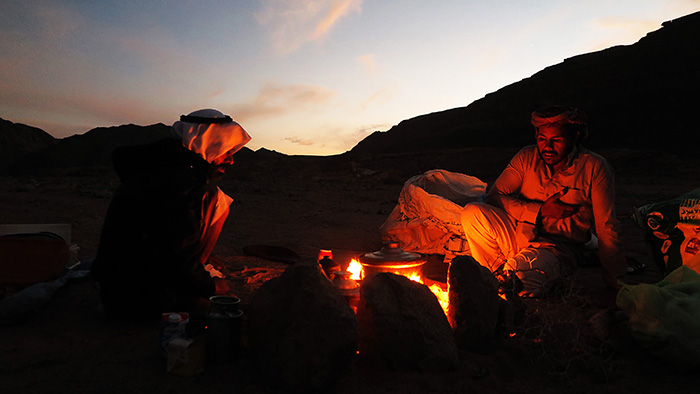
“Tell people the Sinai is safe,” Nssr urged.
“We will,” we responded.
To hike the Sinai Trail, book through sinaitrail.org. A guide, camel support and all meals costs around Dh150 per person per day. More importantly, you’re helping ensure future generations get to experience the desert the way their forefathers did.
Words by: John Henzell

